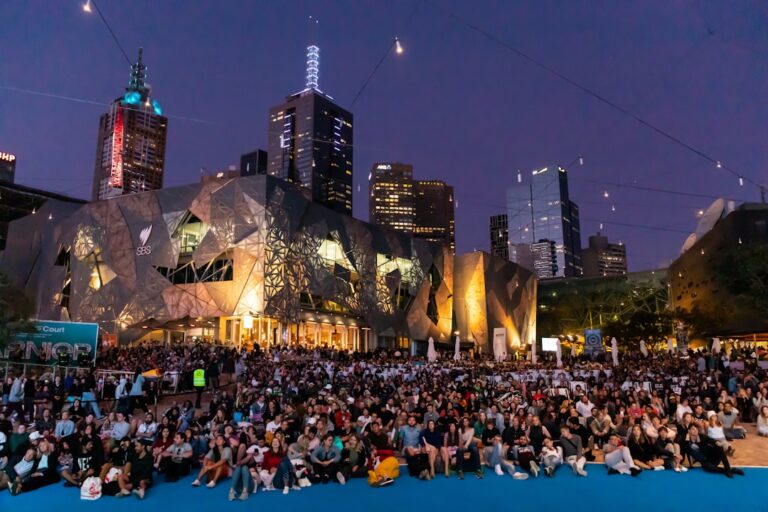Hayao Miyazaki, a luminary in the world of animation, co-founded Studio Ghibli in 1985, a studio that has since become synonymous with artistic excellence and storytelling depth. Born on January 5, 1941, in Tokyo, Japan, Miyazaki’s early experiences during World War II and his love for nature profoundly shaped his worldview and creative vision. His films often reflect a unique blend of fantasy and realism, drawing from Japanese folklore, personal experiences, and a deep appreciation for the natural world.
Studio Ghibli has produced a remarkable array of films that have captivated audiences globally, including classics like “Spirited Away,” “My Neighbor Totoro,” and “Princess Mononoke.” Each film is characterized by stunning hand-drawn animation, intricate world-building, and narratives that resonate with both children and adults. The studio’s ethos is rooted in a commitment to artistic integrity and storytelling that transcends cultural boundaries. Miyazaki’s meticulous attention to detail and his insistence on traditional animation techniques have set Studio Ghibli apart in an industry increasingly dominated by computer-generated imagery.
The films often feature richly developed characters and immersive worlds that invite viewers to explore complex themes. As a result, Studio Ghibli has not only garnered critical acclaim but has also cultivated a dedicated fanbase that spans generations. The studio’s influence extends beyond cinema; it has inspired countless artists, filmmakers, and animators worldwide, establishing a legacy that continues to thrive.
Key Takeaways
- Hayao Miyazaki and Studio Ghibli are renowned for their captivating and imaginative animated films that have garnered international acclaim.
- Ghibli’s films often showcase a deep reverence for nature and environmentalism, with lush landscapes and a focus on the interconnectedness of all living things.
- Themes of empathy and compassion are central to Ghibli’s stories, as characters navigate complex emotions and relationships with a deep sense of understanding and kindness.
- Ghibli films feature a diverse array of strong female characters who defy traditional gender roles and serve as powerful, independent figures.
- Childhood and innocence are celebrated in Ghibli’s narratives, with a focus on the wonder and magic of youth and the importance of preserving a sense of wonder in adulthood.
- Miyazaki’s anti-war stance is reflected in Ghibli’s films, which often explore the devastating impact of conflict and the importance of pursuing peace and understanding.
The Influence of Nature and Environmentalism in Ghibli’s Films
The Struggle Between Humanity and Nature
In films like “Princess Mononoke,” the conflict between humans and forest spirits illustrates the struggle between industrialization and nature. This portrayal presents a nuanced view of environmentalism, highlighting the consequences of human actions on the natural world while acknowledging the complexities of coexistence.
A Celebration of Simplicity and Harmony
In “My Neighbor Totoro,” the depiction of rural Japan celebrates simplicity and harmony with the environment. The film showcases the beauty of the countryside through sprawling fields, ancient trees, and serene landscapes. The titular character, Totoro, embodies the spirit of nature, acting as a guardian of the forest.
Fostering a Sense of Responsibility
By incorporating environmental themes into his narratives, Miyazaki encourages audiences to appreciate the beauty of nature while fostering a sense of responsibility towards its preservation. The connection to nature is emphasized through the characters’ interactions with their surroundings, highlighting the importance of preserving the environment for future generations.
Exploring Themes of Empathy and Compassion in Ghibli’s Stories

Empathy and compassion are recurring themes in Studio Ghibli’s films, often portrayed through the relationships between characters and their journeys of self-discovery. In “Spirited Away,” for instance, Chihiro’s transformation from a timid girl into a courageous individual is catalyzed by her interactions with various spirits and creatures in the spirit world. Her ability to empathize with others—whether it’s helping Haku or understanding No-Face—illustrates the power of compassion in overcoming adversity.
The film emphasizes that true strength lies not in physical prowess but in one’s capacity to connect with others on an emotional level. Similarly, “The Wind Rises” explores empathy through the lens of personal ambition and sacrifice. The protagonist, Jiro Horikoshi, is driven by his passion for aviation but is also deeply affected by the impact of war on humanity.
His relationships with characters like Nahoko highlight the importance of understanding and supporting one another amidst personal struggles. The film poignantly captures the tension between pursuing one’s dreams and recognizing the broader implications of those dreams on society. Through these narratives, Miyazaki crafts stories that resonate with audiences by showcasing the profound impact of empathy and compassion in shaping human experiences.
The Representation of Strong Female Characters in Ghibli Films
One of the hallmarks of Studio Ghibli’s storytelling is its portrayal of strong female characters who defy traditional gender roles. Miyazaki’s protagonists are often complex individuals who embark on transformative journeys, showcasing resilience, courage, and independence. In “Spirited Away,” Chihiro begins as an uncertain girl but evolves into a resourceful hero who navigates a world filled with challenges.
Her growth is emblematic of Miyazaki’s belief in the potential of young women to overcome obstacles through determination and ingenuity. Another notable example is San from “Princess Mononoke,” who embodies strength both physically and emotionally. As a fierce protector of the forest, San challenges societal norms and fights against the encroachment of industrialization.
Her character represents not only physical prowess but also a deep connection to nature and an unwavering commitment to her beliefs. This multifaceted representation of female characters extends to other films like “Kiki’s Delivery Service,” where Kiki’s journey toward self-acceptance highlights themes of independence and personal growth. By centering strong female characters in his narratives, Miyazaki not only empowers women but also inspires audiences to embrace their individuality and strength.
The Importance of Childhood and Innocence in Ghibli’s Narratives
Childhood innocence is a recurring motif in Studio Ghibli’s films, often serving as a lens through which complex themes are explored. The studio frequently portrays children as protagonists who navigate fantastical worlds filled with wonder and danger. In “My Neighbor Totoro,” Satsuki and Mei’s adventures reflect the purity of childhood imagination and their ability to find joy in simple moments.
The film captures the essence of childhood—its curiosity, creativity, and unfiltered emotions—while also addressing themes of loss and resilience. In “Spirited Away,” Chihiro’s journey into the spirit world serves as an allegory for the transition from childhood to adulthood. As she confronts various challenges, her innocence is tested, yet she retains her sense of wonder and compassion throughout her trials.
This duality highlights the importance of preserving one’s childlike spirit even amidst life’s complexities. Miyazaki’s narratives often suggest that childhood is not merely a phase but a vital part of human experience that shapes one’s identity and worldview. By celebrating childhood innocence, Ghibli films encourage audiences to cherish their own memories while fostering a sense of hope for future generations.
Miyazaki’s Anti-war Stance and its Reflection in Ghibli’s Films

Miyazaki’s anti-war stance is intricately woven into the fabric of many Studio Ghibli films, reflecting his deep-seated beliefs about peace and humanity’s capacity for destruction. His experiences during World War II profoundly influenced his worldview; he witnessed firsthand the devastation wrought by conflict. This perspective is evident in films like “The Wind Rises,” which tells the story of Jiro Horikoshi, an aircraft designer whose creations were used during wartime.
While Jiro’s passion for aviation is celebrated, the film does not shy away from addressing the moral complexities associated with creating machines designed for destruction. In “Howl’s Moving Castle,” Miyazaki critiques war through the lens of personal relationships and societal impact. The film portrays Howl as a character who initially avoids conflict but ultimately recognizes his responsibility to protect those he loves.
The backdrop of war serves as a catalyst for character development while emphasizing its futility and destructiveness.
Miyazaki’s films resonate with audiences not only for their artistic brilliance but also for their profound moral messages.
By addressing themes such as environmentalism, empathy, strong female representation, childhood innocence, and anti-war sentiments, Studio Ghibli has carved out a unique space in global cinema that continues to inspire dialogue and reflection long after the credits roll.
Hayao Miyazaki’s vision and the philosophy behind Ghibli’s stories are deeply rooted in themes of nature, humanity, and interconnectedness. In a related article on the crucial ecological roles of microbes and lower cryptogams in ecosystems, the importance of understanding and appreciating the intricate relationships within the natural world is highlighted. Miyazaki’s films often explore the delicate balance between humans and nature, echoing the sentiments of this article on the essential roles played by even the smallest organisms in maintaining ecological harmony.
FAQs
What is the philosophy behind Hayao Miyazaki’s stories?
Hayao Miyazaki’s stories are often rooted in themes of environmentalism, pacifism, and the importance of empathy and compassion. He often explores the complexities of human nature and the impact of technology on society.
What are some recurring themes in Studio Ghibli’s films?
Some recurring themes in Studio Ghibli’s films include the importance of nature, the value of friendship and family, the impact of war and conflict, and the resilience of the human spirit. These themes are often portrayed through fantastical and imaginative storytelling.
How does Hayao Miyazaki’s vision influence the animation style of Studio Ghibli’s films?
Hayao Miyazaki’s vision emphasizes hand-drawn animation and attention to detail, resulting in visually stunning and immersive worlds. His commitment to traditional animation techniques sets Studio Ghibli’s films apart from other animated works.
What is the significance of female characters in Studio Ghibli’s films?
Female characters in Studio Ghibli’s films are often portrayed as strong, independent, and complex individuals. Miyazaki’s stories frequently feature female protagonists who defy traditional gender roles and challenge societal expectations.
How does Studio Ghibli’s storytelling appeal to both children and adults?
Studio Ghibli’s storytelling often incorporates universal themes and emotional depth that resonate with audiences of all ages. The films balance whimsical and imaginative elements with thought-provoking narratives, making them accessible and engaging for both children and adults.























+ There are no comments
Add yours